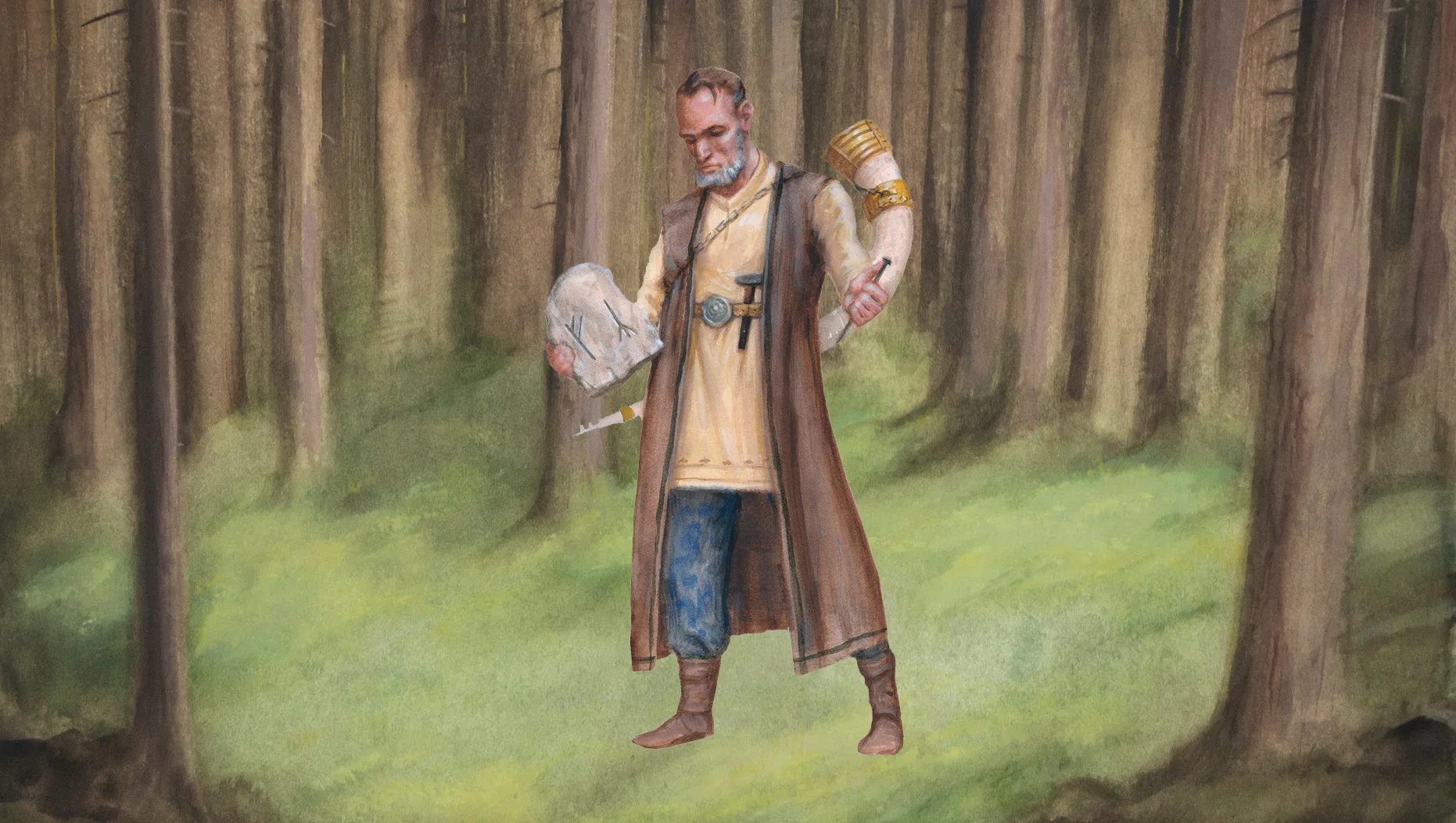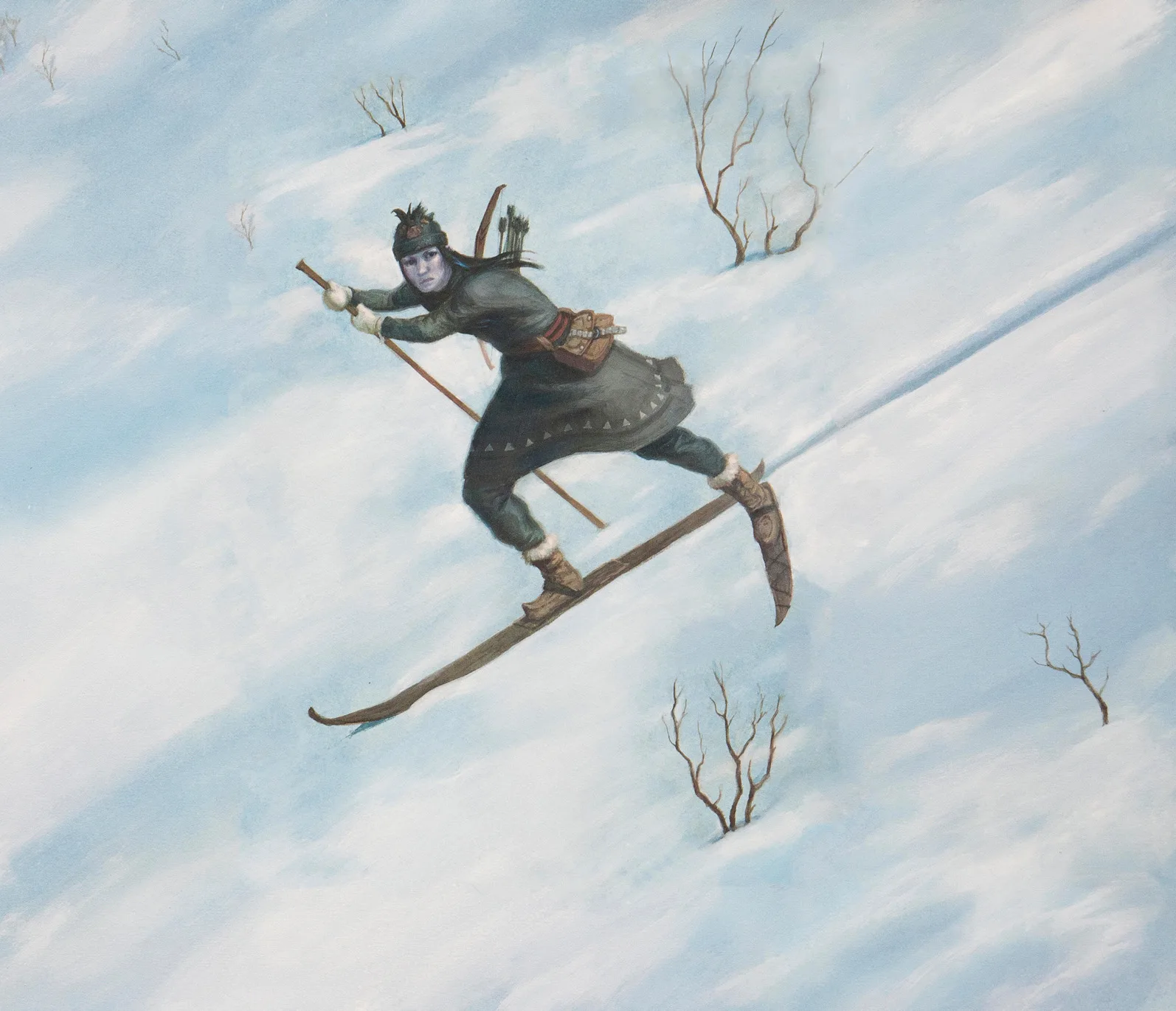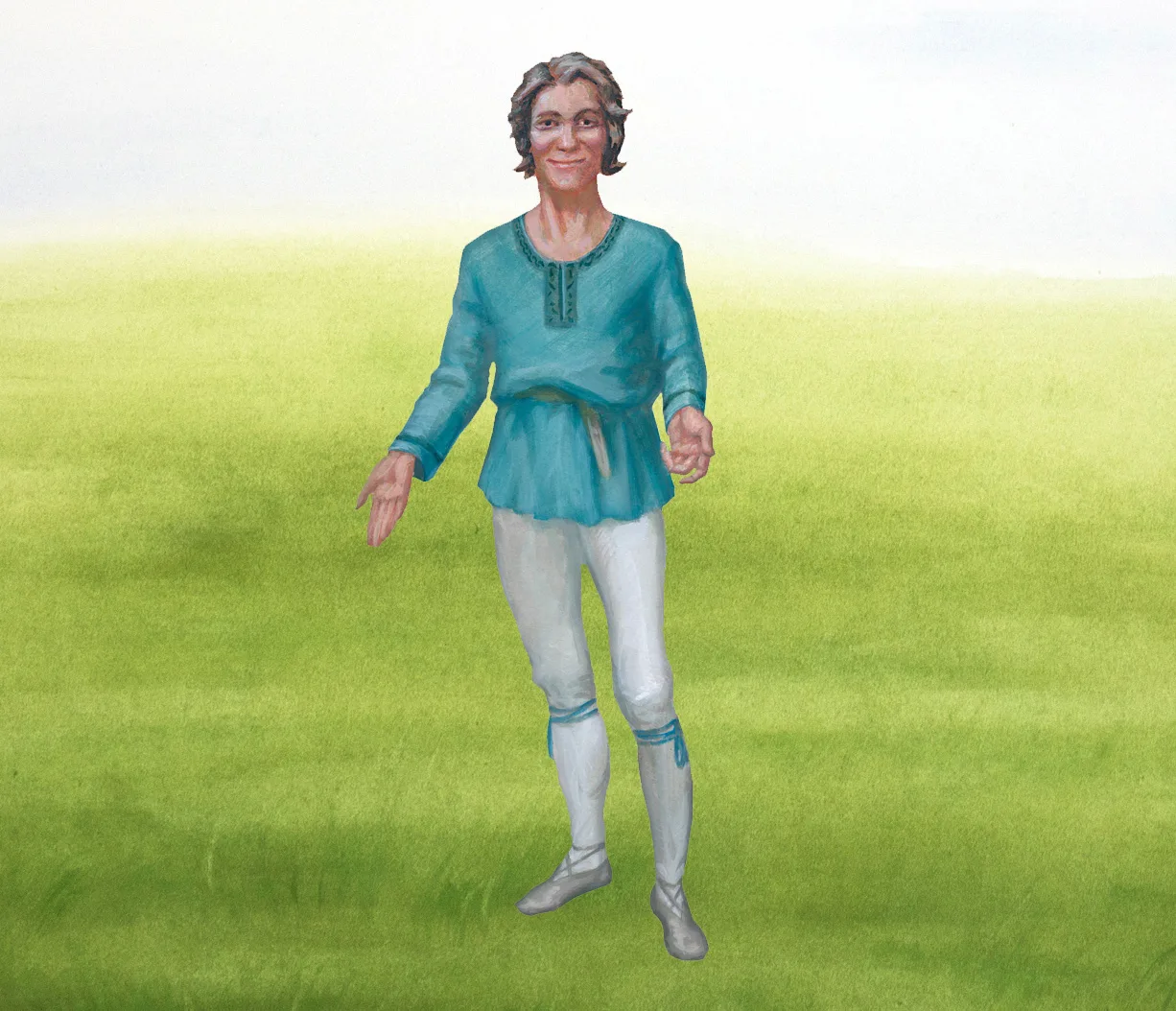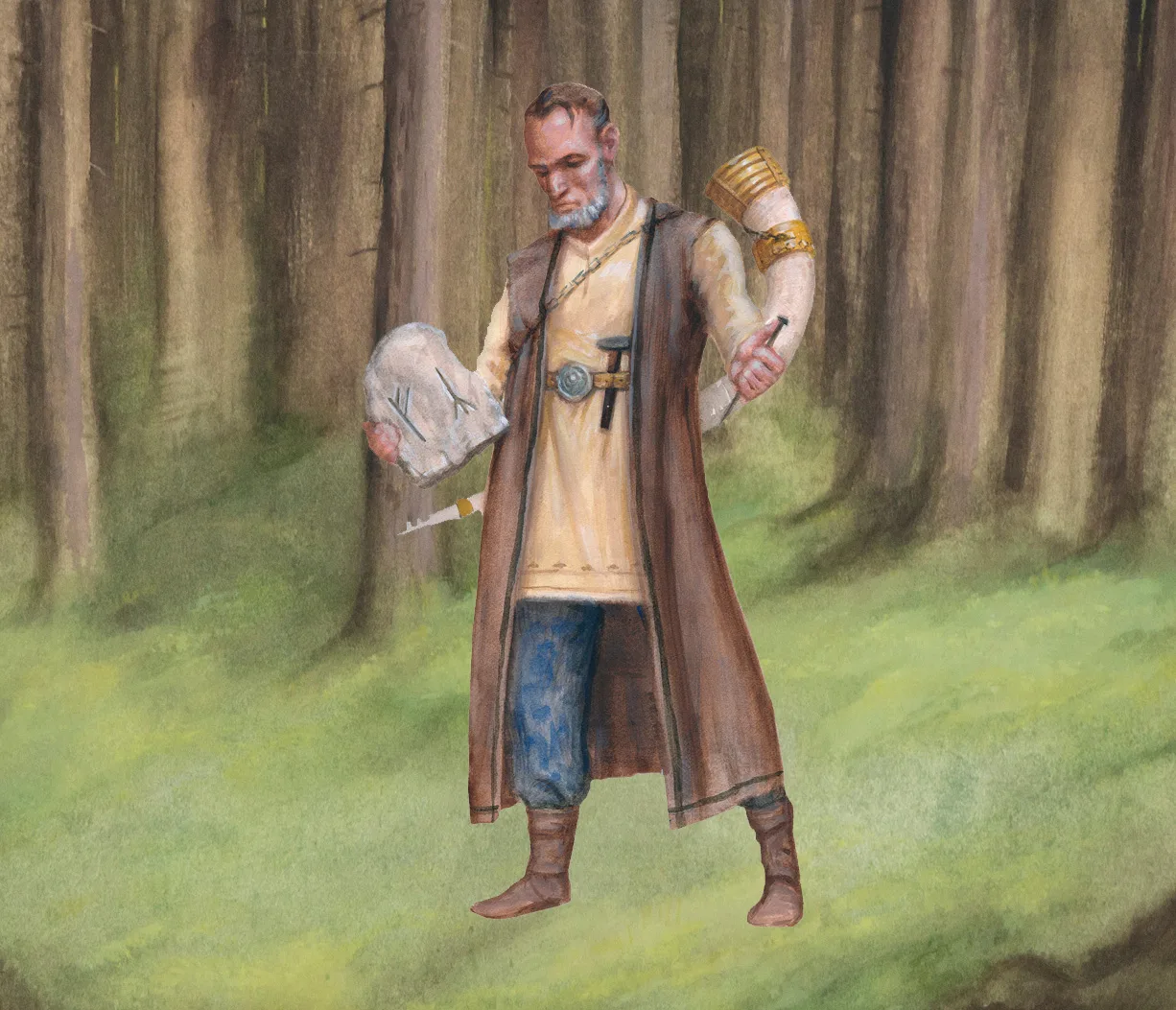Heimdall – forefather of humankind
Iron Age
500 BC – AD 1100
Viking Age
AD 800 – AD 1100
Middle Ages
AD 1050 – AD 1520
Heimdall is ever watchful, and with his keen sight and extraordinary hearing he can see for miles and hear the grass growing in the fields and the wool on sheep’s backs. He needs less sleep than a bird and can see as clearly by night as by day.


Piece of a rune
Rune piece of bronze. The tiny plaque has about 30 rune signs. The runes migt have been a curse or an enchantment. Some words are readable, for example skaþi/skaði. Grave find from Ulvsunda, Uppland.
On view at Historiska museet in the exhibition Vikingarnas världFind this object in display 33, Vikingarnas värld Monter 33
The gold-toothed god
Heimdall bears the epithet Gullintanni, meaning “the Gold-Toothed.” He rides the horse Gulltoppr, whose name means “the Golden-Maned.” These names have led some scholars to suggest that Heimdall is connected to the sky or the sun.
He dwells in Himinbjörg, “Heaven’s Mountain,” beside Bifröst, the rainbow bridge that links Asgard with the world of men. Some interpret this as a symbol of the Milky Way. There he keeps his watch in tranquillity, often with a horn of mead in hand.
Heimdall shows his wisdom in the tale where the giant Thrym steals Thor’s hammer. It is Heimdall who proposes that Thor should disguise himself in order to retrieve it – one of the most famous stories in Norse mythology.
Heimdall blows the Gjallarhorn at Ragnarök
When Ragnarök, the end of the world, begins and the rainbow bridge Bifröst breaks, Heimdall blows his horn, Gjallarhorn, to warn the gods. Ragnarök is a great battle in which much is destroyed, and in the final clash Heimdall and the evil Loki meet. They fight one another, and both fall.

Oliphant
Signal horn of carved elephant tusk. This example is from the Middle Ages.
Heimdall’s role in mythology
Heimdall is a central figure in the Norse sagas, yet there is no historical evidence that he was ever worshipped in a cult, nor are there places named after him, unlike other gods such as Thor or Odin.
Facts about Heimdall:
- Name: Heimdall (also Heimdallr)
- Parents: Odin (according to some sources) and nine mothers (giantesses of the sea)
- Siblings: None specifically mentioned, though he is sometimes counted among the sons of the Æsir
- Qualities: Watchful, sharp-sighted, just, strong, wise
- Symbolism: Guardianship, dawn, light, vigilance, order
- Resides: Himinbjörg (“Heaven’s Mountain”), by the rainbow bridge Bifröst in Asgard










